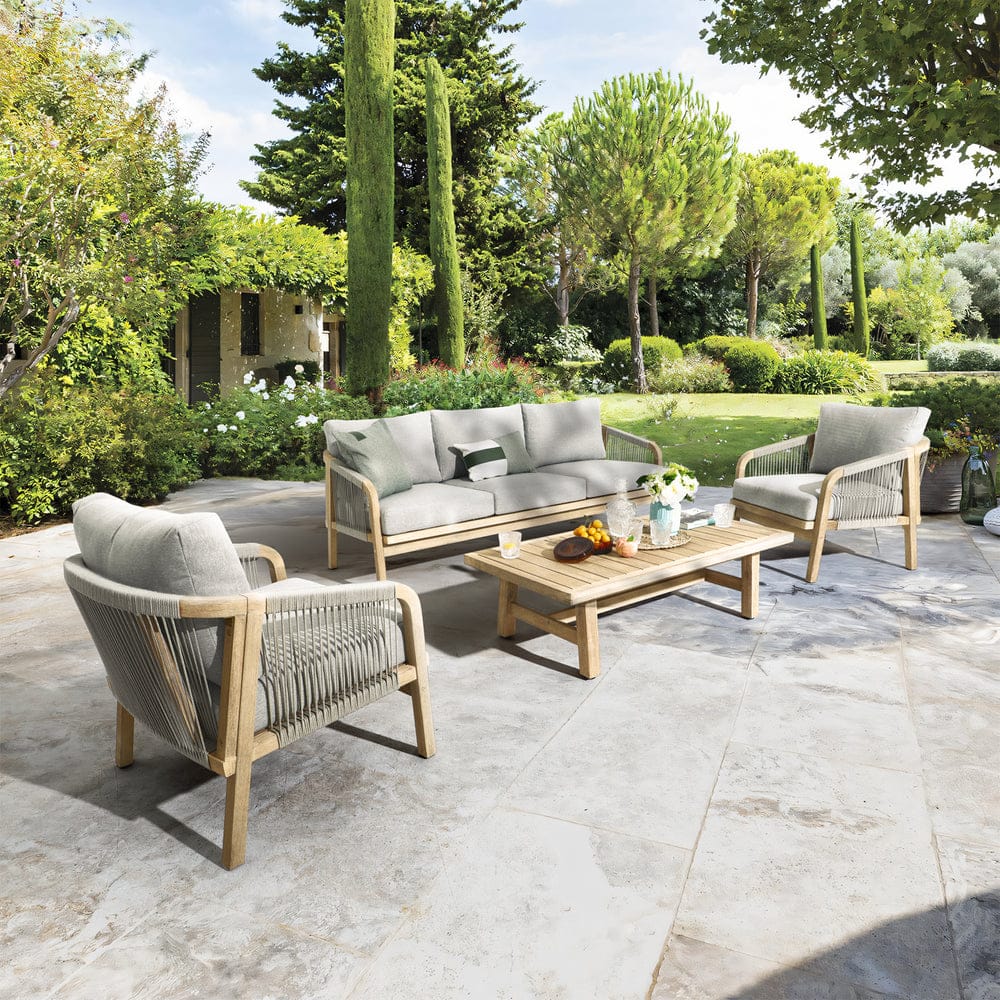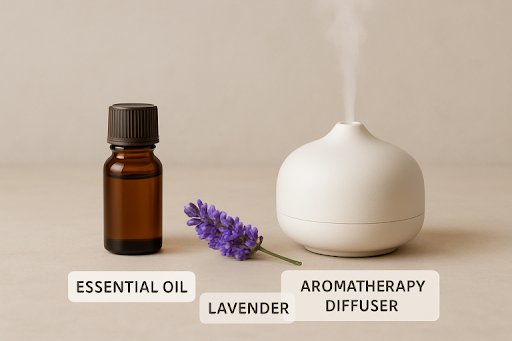Home
Modern vs. Traditional Patio Conversation Sets: Which Style Fits Your Home?

When it comes to outdoor living, choosing the right patio conversation set can transform your backyard into a stylish and functional retreat. But with so many options available, how do you decide between modern and traditional styles?
In this guide, we’ll compare modern vs. traditional patio conversation sets, exploring their key differences, benefits, and how to choose the best style for your home. Whether you prefer sleek, contemporary designs or timeless, classic aesthetics, this article will help you make an informed decision.
What Are Patio Conversation Sets?
Patio conversation sets by Jardina Furniture are outdoor furniture arrangements designed for relaxation and socializing. They typically include:
- Seating (sofas, chairs, loveseats)
- A coffee or side table
- Optional extras (ottomans, fire pits, sectionals)
These sets come in various materials, colors, and designs, making them a perfect addition to any outdoor space.
Modern Patio Conversation Sets: Sleek and Contemporary
Key Features of Modern Style
Modern patio conversation sets emphasize clean lines, minimalism, and functionality. Here’s what sets them apart:
✅ Sleek Designs – Sharp angles, geometric shapes, and low-profile seating.
✅ Neutral & Bold Colors – Often features black, white, gray, or metallic finishes, with occasional pops of bold hues.
✅ Durable Materials – Aluminum, synthetic wicker, tempered glass, and powder-coated steel.
✅ Modular & Space-Saving – Many modern sets are modular, allowing flexible arrangements.
Pros of Modern Conversation Sets
✔ Low Maintenance – Resistant to rust, fading, and weather damage.
✔ Versatile Aesthetic – Complements modern, minimalist, and industrial-style homes.
✔ Lightweight & Easy to Move – Aluminum and synthetic wicker are lighter than traditional wood or wrought iron.
Cons of Modern Conversation Sets
❌ Can Feel “Cold” – Some may find the minimalist design less cozy.
❌ Less Ornate – Lacks intricate detailing found in traditional sets.
Best For:
- Urban homes with contemporary architecture
- Small patios or balconies (space-efficient designs)
- Homeowners who prefer easy upkeep
Traditional Patio Conversation Sets: Classic and Timeless
Key Features of Traditional Style
Traditional patio conversation sets evoke warmth, elegance, and intricate detailing. Common characteristics include:
✅ Ornate Designs – Curved arms, decorative scrollwork, and plush cushions.
✅ Natural Materials – Teak, cedar, wrought iron, and cushioned fabrics.
✅ Earthy & Warm Colors – Browns, beiges, deep greens, and floral patterns.
✅ Comfort-Focused – Deeper seating and thicker cushions for relaxation.
Pros of Traditional Conversation Sets
✔ Timeless Appeal – Never goes out of style, ideal for classic and rustic homes.
✔ Superior Comfort – Plush cushions and ergonomic designs.
✔ Durability – High-quality wood and wrought iron last for decades.
Cons of Traditional Conversation Sets
❌ Higher Maintenance – Wood requires sealing; wrought iron may rust over time.
❌ Heavier & Less Portable – Not ideal for frequent rearrangements.
Best For:
- Country cottages, colonial, or Victorian-style homes
- Large outdoor spaces where a grand aesthetic is desired
- Those who prioritize comfort and classic charm
How to Choose Between Modern and Traditional Styles
- Consider Your Home’s Architecture
- Modern homes (sleek lines, glass, metal) → Modern sets
- Traditional homes (wood, brick, ornate details) → Traditional sets
- Evaluate Your Outdoor Space
- Small patios? → Modern (space-saving)
- Sprawling gardens? → Traditional (grand presence)
- Think About Maintenance
- Low-maintenance? → Modern (weather-resistant materials)
- Don’t mind upkeep? → Traditional (wood sealing, rust prevention)
- Prioritize Comfort vs. Style
- Ultimate comfort? → Traditional (plush cushions)
- Sleek aesthetics? → Modern (minimalist vibe)
- Budget Considerations
- Affordable options? → Modern (aluminum, synthetic wicker)
- Investment pieces? → Traditional (teak, wrought iron)
Hybrid Styles: Blending Modern and Traditional
Can’t decide? Many homeowners opt for a transitional style, combining elements of both:
- Example: A teak frame (traditional) with clean lines and neutral cushions (modern).
This approach offers versatility and works well in eclectic outdoor spaces.
Final Verdict: Which One Should You Choose?
| Feature | Modern | Traditional |
| Aesthetic | Sleek, minimalist | Classic, ornate |
| Materials | Aluminum, synthetic wicker | Wood, wrought iron |
| Maintenance | Low | Moderate to High |
| Best For | Small spaces, urban homes | Large gardens, classic homes |
Go Modern If:
- You love clean, contemporary designs.
- You want low-maintenance furniture.
- Your home has a minimalist or industrial vibe.
Go Traditional If:
- You prefer cozy, timeless elegance.
- Your home has classic architectural details.
- You don’t mind occasional upkeep.
Conclusion
Choosing between modern and traditional patio conversation sets depends on your home’s style, outdoor space, and personal preferences. Modern sets offer sleek, easy-care designs, while traditional sets bring warmth and classic charm.
Whichever you choose, ensure it aligns with your lifestyle and enhances your outdoor living experience. Ready to upgrade your patio? Browse top-rated conversation sets and find the perfect match for your home!
Home
Energy-Efficient HVAC Innovations for Modern Homes

Introduction to Energy-Efficient HVAC Systems
As global attention shifts toward sustainable living solutions, energy-efficient HVAC systems have gained significant traction in modern home design. These systems represent a crucial technological leap to reduce energy consumption while providing the ultimate comfort experience. In regions such as Burlington, MA, homeowners are increasingly aware of such systems’ advantages. Opting for tailored air cooling services Burlington, MA, not only enhances comfort but also contributes to substantial long-term cost savings and a reduced carbon footprint.
Energy-efficient HVAC systems differ from traditional models in their technical architecture. They are equipped with advanced components designed to minimize energy usage, thus promoting an eco-friendly lifestyle. This efficiency does not come at the expense of comfort or performance. Instead, these systems are engineered to operate seamlessly, ensuring consistent indoor air quality and optimal temperature control, making them a wise choice for the environmentally conscious homeowner.
Benefits of Upgrading to Energy-Efficient Systems
Upgrading to energy-efficient HVAC systems offers numerous advantages beyond energy savings. The dramatic reduction in monthly utility bills is at the forefront, achieved through wise energy consumption. The U.S. Department of Energy highlights that energy-efficient upgrades can slash energy expenses by up to 50%, a significant reduction that alleviates financial burdens over time. However, the benefits transcend monetary savings.
Energy-efficient HVAC systems enhance indoor air quality by utilizing advanced filtration methods that eliminate pollutants and allergens, thereby improving living spaces’ overall health and comfort. This shift to improved air quality is especially advantageous for those with respiratory issues, offering a healthier, more pleasant living space. Moreover, these systems enhance asset worth, which is frequently regarded as a desirable attribute for prospective purchasers, thereby raising property value.
Key Innovations in HVAC Technology
The HVAC industry is at the forefront of technological advancement, with several groundbreaking innovations dramatically improving energy efficiency. One notable advancement is the integration of variable-speed motors. Unlike traditional models that operate at a single speed, these motors adjust their operational pace to match real-time cooling or heating demand. This intelligent adjustment reduces unnecessary energy use by operating at lower speeds during less demanding conditions, resulting in significant energy savings.
Zoning systems further enhance energy efficiency by allowing homeowners to regulate temperatures independently in different areas of their homes. This focused strategy guarantees that energy is not squandered in empty or rarely utilized areas, enhancing resource efficiency.
The absolute brilliance of these innovations lies in their ability to provide tailored comfort levels throughout the home, something that older systems cannot match.
Smart Thermostats: The Brain of Modern Systems
The advent of smart thermostats has revolutionized home climate control, serving as the intelligent core of modern HVAC systems. These devices connect seamlessly to Wi-Fi networks and utilize data-driven insights from occupancy patterns, weather forecasts, and user habits to fine-tune temperature settings automatically. This level of automation ensures that homes remain comfortable while avoiding inefficient energy use.
For homeowners who crave convenience and control, smart thermostats offer the luxury of managing heating and cooling remotely via smartphones or tablets. This capability ensures comfort when returning home and allows users to enact energy-saving adjustments dynamically, even from afar. The combination of convenience, energy efficiency, and precision makes smart thermostats indispensable to contemporary HVAC systems.
Eco-Friendly Refrigerants: A Green Perspective
The environmental repercussions of traditional refrigerants have pushed the industry toward more sustainable alternatives. Traditional refrigerants have a considerable potential for global warming and cause environmental damage when discharged into the atmosphere.
In response, newer, eco-friendly options have been developed and specifically formulated to mitigate these detrimental effects. Stringent global agreements and regulatory frameworks, such as the Kigali Amendment, drive the shift to these alternatives.
These eco-friendly refrigerants comply with environmental regulations and maintain high performance standards. As a result, users can operate their HVAC systems with peace of mind, knowing they’re minimizing ecological impact without compromising efficiency or comfort. This strategic pivot to green refrigerants is a testament to the industry’s commitment to sustainable practices.
The Role of Solar-Powered HVAC Units
The incorporation of solar energy into HVAC systems signifies a significant change in the use of renewable energy. Solar-powered HVAC systems capture the sun’s plentiful energy, providing an eco-friendly and economical option compared to traditional electric power. This advancement decreases dependence on non-renewable energy sources while also significantly lowering operating expenses, offering a combined advantage of ecological preservation and cost reduction.
As more homeowners adopt solar HVAC units, the cumulative environmental benefits become substantial. Solar integration is thus a pivotal step in the broader adoption of green technologies.
Common Misconceptions About Energy Efficiency
Despite their growing popularity, energy-efficient HVAC systems are still surrounded by several misconceptions. A prevalent myth is the perceived exorbitant initial investment required for these systems. While the upfront cost may be higher than traditional options, the consistent savings on energy bills often offset this initial outlay over time, making the investment economically viable in the long run.
Some also mistakenly believe that energy-efficient systems sacrifice performance for efficiency. However, advancements in technology have dispelled this notion. Modern energy-efficient systems are engineered to deliver superior performance while utilizing less energy. These misconceptions often stem from outdated perceptions and can be addressed through education and awareness of these systems’ benefits.
Steps to Transition to an Energy-Efficient HVAC System
Transitioning to an energy-efficient HVAC system is a methodical process that requires several key considerations. The process starts with an energy evaluation to pinpoint areas where enhancements can result in significant savings. This phase establishes a foundational comprehension, guaranteeing that investments are aimed precisely and enhancing potential advantages.
Once the assessment is complete, the next step involves researching and selecting a suitable energy-efficient model that meets the home’s specific requirements regarding size, capacity, and technological features. Collaborating with professionals for guidance during this selection process can provide insights into the best options. The final step is ensuring proper installation and regular maintenance of the system. Professional installation guarantees the system operates at its full potential, while regular maintenance ensures longevity and continued efficiency.
For homeowners, embracing energy-efficient HVAC systems represents a commitment to sustainability. They also promise enhanced comfort, reduced environmental impact, and considerable long-term savings, making the transition a sound investment in the future of home living.
Home
Aromatherapy for Modern Wellness: Everyday Uses and Evidence-Based Benefits

Introduction
Aromatherapy, a centuries-old practice of incorporating the scents and healing properties of essential oils into daily life, has experienced a resurgence as people seek natural solutions for stress, improved sleep, and mind-body balance. At its core, aromatherapy harnesses the power of plant-based essences, serving as a bridge between ancient traditions and modern science. As you consider ways to enhance your well-being naturally, exploring an aromatherapy service Sussex County DE, can unlock customized solutions for everyday wellness challenges.
Today’s hectic pace means more individuals are searching for gentle means to restore energy, focus, and calm. Essential oils, concentrated from leaves, flowers, and roots, deliver unique compounds shown to affect mood, cognition, and sleep. Whether you’re new to aromatherapy or a seasoned enthusiast, understanding both the science and practical applications of these oils can lead to more mindful, healthful routines.
Incorporating aromatherapy doesn’t require extensive knowledge—all it takes is a willingness to experiment and a commitment to safety. More people are weaving oils into their daily rituals, from morning wake-ups to evening wind-downs. Evidence now backs what ancient healers sensed: specific plant aromas can trigger profound shifts in body and mind, supporting both relaxation and alertness.
While benefits are promising, responsible use is crucial. Not all essential oils are created equal, and proper dilution is vital for avoiding irritation or other adverse effects. Consulting with professionals before starting a new wellness practice is always recommended, especially if you have underlying health concerns or are pregnant.
Understanding Aromatherapy
Essential oils are the highly concentrated extracts of flowers, leaves, bark, or roots. Their sharp and distinctive fragrances stem from various phytochemicals, each conferring different potential effects. Standard application methods include inhalation, topical use (after proper dilution), or diffusion with a dedicated device. A single drop holds the plant’s aromatic security system—compounds designed to communicate, calm, or defend against the outside world, now harnessed for human wellness.
The body’s olfactory system plays a direct role in the effects of aromatherapy. When inhaled, scent molecules travel to the limbic system, the brain center involved in emotion, memory, and motivation. This fast-acting pathway explains why essential oils can quickly alter mood or induce physical relaxation. Topical applications, meanwhile, provide local benefits and subtle aromatherapy effects as molecules absorb into the skin.

Evidence-Based Benefits
Stress Reduction
Modern research affirms that certain essential oils, such as lavender, chamomile, and bergamot, exert measurable calming effects. For example, a study in the journal Evidence-Based Complementary and Alternative Medicine found that aromatherapy can significantly reduce cortisol, the body’s primary stress hormone, after just two weeks of regular use. This reduction in the body’s stress response supports a greater sense of tranquility and lessens the burden of day-to-day anxiety.
Improved Sleep Quality
Sleep disturbances are a modern epidemic—but aromatherapy offers hope. Lavender, in particular, has been repeatedly shown to aid sleep. A systematic review published in the journal Evidence-Based Complementary and Alternative Medicine noted that inhaling lavender before bed can decrease the time it takes to fall asleep and improve overall sleep quality. This is particularly true for individuals dealing with insomnia or heightened anxiety, two groups that report meaningful improvements with consistent use.
Cognitive Enhancement
Not all essential oils are sedative—some are invigorating. Research from Northumbria University in the UK demonstrated that both rosemary and peppermint oils can enhance memory, recall, and alertness. Students and professionals alike may benefit from diffusing or inhaling these scents before cognitively demanding tasks. The scents work, in part, by stimulating neural pathways related to focus and memory.
Incorporating Aromatherapy into Daily Life
Bringing aromatherapy into your everyday routine is both flexible and accessible. Here are some popular methods:
- Diffusion: Place a few drops of your chosen oil in an ultrasonic diffuser to scent your space with calming or stimulating aromas.
- Topical Application: Mix a few drops of essential oil with a carrier oil (such as coconut or jojoba oil) and apply to pulse points, like the wrists or temples, for a lingering, personal aromatherapy experience.
- Baths: Add several drops of oil to a warm bath to combine sensory relaxation with direct skin benefits.
- Inhalation: Use a personal inhaler or inhale a drop from a tissue for a quick, portable dose of aromatherapy during the day.
Routine use, primarily targeted to specific times of day or particular wellness needs, can help build healthy aromatherapy habits and maximize long-term benefits.
Safety Considerations
Despite their natural origins, essential oils are highly potent and require careful handling. Always dilute oils before applying them to the skin, as improper use may cause irritation or allergic reactions. It’s vital to perform a patch test on a small area of skin before applying it more widely. Some oils, especially those of citrus type, can increase sensitivity to sunlight (photosensitivity) and should not be used before sun exposure.
Consult a healthcare professional if you are pregnant, breastfeeding, or have chronic health conditions. Children and pets have special considerations, as some oils may be unsafe for their use. Look for reputable brands that test for purity and avoid ingesting essential oils unless supervised by a qualified healthcare provider.
Conclusion
Aromatherapy holds promise as a practical intervention for managing stress, addressing sleep issues, and alleviating cognitive challenges in today’s busy world. Backed by research and accessible for everyday use, essential oils can enhance modern self-care routines with benefits that extend from head to toe. Mindful selection and safe practices ensure that aromatherapy remains a gentle and enjoyable addition to any wellness toolbox. With increasing interest from both the scientific and holistic communities, incorporating essential oils into daily life offers a simple and time-tested approach to enhanced well-being.
Home
How a Pool Table Can Enhance Social Interaction and Family Time

The Social Benefits of Pool Tables
Installing a pool table at home can enhance relationships and well-being by fostering interaction, laughter, and friendly competition among family and friends. It serves as a versatile entertainment piece that encourages casual games, promoting conversation and teamwork. The inviting atmosphere can lead to spontaneous tournaments, helping to break the ice with new guests and creating a lively social environment.
If you’re searching for a way to create more shared time with loved ones or want to rejuvenate an existing billiard table, consider a pool table refelting service near me to refresh the experience and sustain long-lasting enjoyment. Refreshing your table not only enhances gameplay but also reinvigorates the centerpiece that brings people together, making your home even more inviting.
Strengthening Family Bonds
A pool table’s appeal lies in its accessibility, enabling families of all ages to enjoy and learn together, fostering bonding and meaningful interactions that are free from digital distractions. It transforms simple game time into treasured family moments, strengthening emotional bonds and enhancing overall happiness. Whether for quick after-dinner matches or weekend game nights, a pool table offers a versatile way to create tradition, support, and healthy rivalry, bridging generations and deepening family connections.

Sharpening Cognitive and Life Skills
Beyond social perks, pool offers significant mental benefits for all ages. It requires analyzing angles, predicting ball paths, and strategizing, which can improve spatial reasoning and problem-solving. Each game develops patience, focus, and perseverance. Pool’s combination of mental and physical skills enhances hand-eye coordination and reflexes. Success depends on strategy and execution, keeping the brain active. As Psychology Today notes, cue sports foster cognitive flexibility and adaptive thinking applicable to life and work. The game helps especially young players build resilience and confidence, making outside challenges easier by practicing analysis and decision-making. Developing these skills through pool can promote persistence, growth, and self-improvement.
Transforming Your Home into a Social Hub
Adding a pool table benefits your home and social life. It turns a basement or game room into an inviting space that attracts guests, who stay for the camaraderie and excitement. Beyond fun, it’s a long-term investment in social gatherings, making your house a go-to spot for holidays, birthdays, and get-togethers, strengthening relationships. A well-chosen table can complement your décor, enhance your space, and serve as a stylish, functional addition that elevates your home as a warm, welcoming gathering place.
Conclusion
Embracing a pool table greatly enhances social interaction and family bonding by blending fun, learning, and healthy competition. It fosters open communication, laughter, and teamwork while improving life skills and cognitive abilities. As it becomes a home staple, it naturally draws everyone in, turning ordinary evenings into memorable moments filled with joy. Whether revitalizing an old table or adding a new one, it creates lasting memories and strengthens relationships. A pool table isn’t just a game—it’s a foundation for happiness, deeper connections, and a lively home, transforming how you and your loved ones interact and grow.
-

 GENERAL11 months ago
GENERAL11 months agoFrom Fan Art to Original Works: The Diversity of doujindesu Creations
-

 Entertainment7 months ago
Entertainment7 months agoEnchantment & Excitement: Crafting Unforgettable Event Experiences
-

 GENERAL9 months ago
GENERAL9 months agoEngland Business Visa Requirements for American and International Citizens in 2025: A Guide for Entrepreneurs
-

 GENERAL7 months ago
GENERAL7 months agoCrossword Conundrum: The Significance of vault opener nyt crossword
-

 GENERAL10 months ago
GENERAL10 months agoLatest Trends in Men’s and Women’s Jackets for the Upcoming Season
-

 GENERAL7 months ago
GENERAL7 months agoExploring the World of nhentai.nef: A Comprehensive Guide for New Users
-

 Health11 months ago
Health11 months agoDiscovering gel ooru: The Ultimate Guide to This Unique Traditional Craft
-

 GENERAL12 months ago
GENERAL12 months agoWhy raterpoint is Revolutionizing Customer Feedback
